Many stories have been told about the famous French writer, diplomat and pilot Romain Gary. One of the most popular is about how he won the Prix Goncourt twice, although it can only be awarded to an author once. He won it the second time under the name Emile Ajar, and became a something of a legend. Romain Gary loved to fantasise. According to the New Yorker journalist Adam Gopnik, he ‘made up stories the way other people make up beds: daily and conscientiously and without much premeditation’. He lied all the time, and about everything: about his background, his name, his mother, his father, his education, his loves, his son, and even his literary background.
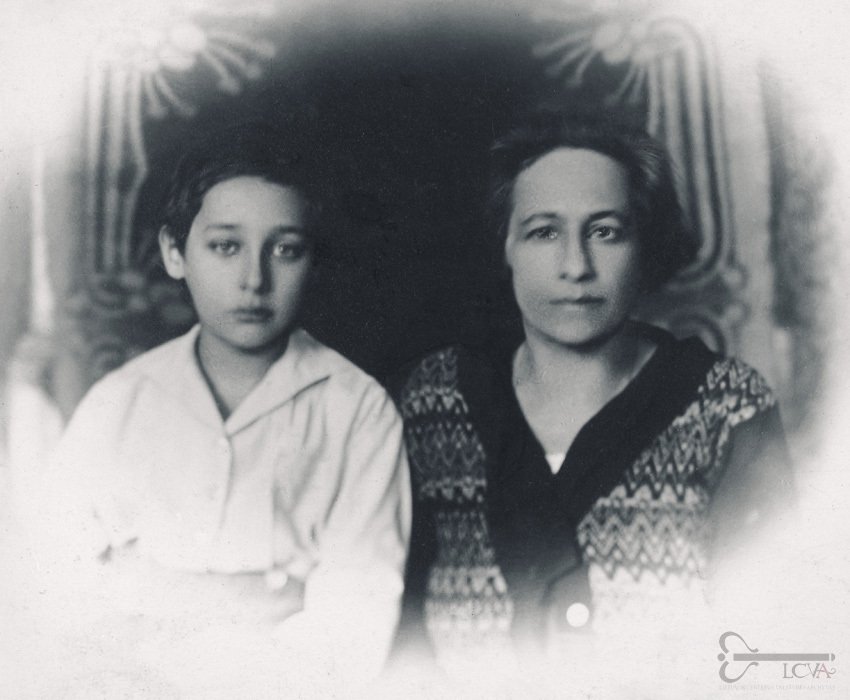 Gary was raised by an eccentric mother who was obsessed with a love of France and for her child, and he never even knew his father, who died together with his second family during the Holocaust. He migrated to France, became a pilot in the air force, and was seriously wounded. He later became French consul in Los Angeles, and won prestigious literary awards for works that he wrote in a language that was not his native tongue. His life was so unusual that even his tragic death could have been a scene from one of his novels. ‘I’ve said everything I have to say,’ he wrote in his suicide note in 1980, while also revealing the whole story of the second Prix Goncourt.
Gary was raised by an eccentric mother who was obsessed with a love of France and for her child, and he never even knew his father, who died together with his second family during the Holocaust. He migrated to France, became a pilot in the air force, and was seriously wounded. He later became French consul in Los Angeles, and won prestigious literary awards for works that he wrote in a language that was not his native tongue. His life was so unusual that even his tragic death could have been a scene from one of his novels. ‘I’ve said everything I have to say,’ he wrote in his suicide note in 1980, while also revealing the whole story of the second Prix Goncourt.
But no matter how much Roman Kacew/Romain Gary tried to embellish his autobiography, Jewish Vilnius left a deep impression on him. The famous writer had a short but lasting connection with the city: he was born here, and spent several memorable years of his childhood in its Jewish milieu.
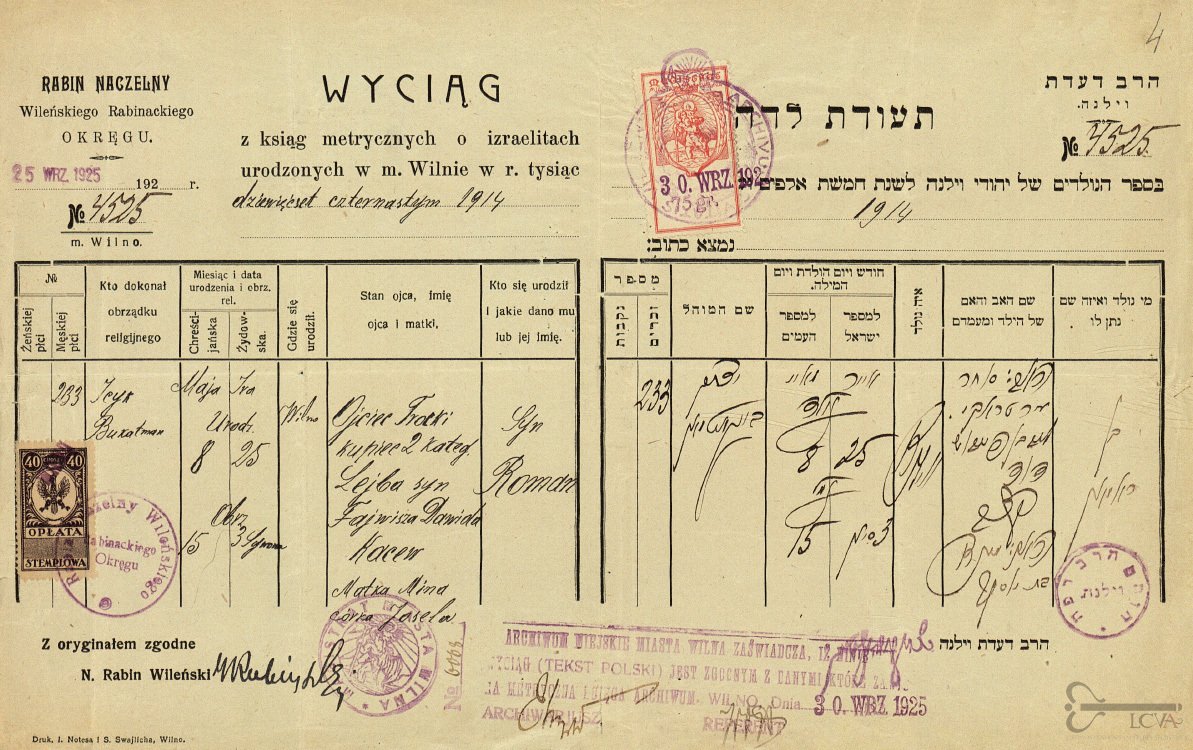 Romain Gary’s mother Mina, a Jew from the town of Švenčionys (Sventsyan), married Leib Kacew from Vilnius after divorcing her first husband. Leib’s father Faivel Kacew was a well-known fur trader in the city. He had a shop and a warehouse right in the centre of Vilnius, on Vokiečių (Niemiecka) Street. The couple had a son, Roman, in 1914, but they did not stay together for long: first they were separated by the war, and then the father started a family with another woman. After returning to Vilnius in 1921, Mina settled with Roman on Great Pohulianka (Wielka Pohulianka, now Jonas Basanavičiaus) Street.
Romain Gary’s mother Mina, a Jew from the town of Švenčionys (Sventsyan), married Leib Kacew from Vilnius after divorcing her first husband. Leib’s father Faivel Kacew was a well-known fur trader in the city. He had a shop and a warehouse right in the centre of Vilnius, on Vokiečių (Niemiecka) Street. The couple had a son, Roman, in 1914, but they did not stay together for long: first they were separated by the war, and then the father started a family with another woman. After returning to Vilnius in 1921, Mina settled with Roman on Great Pohulianka (Wielka Pohulianka, now Jonas Basanavičiaus) Street.
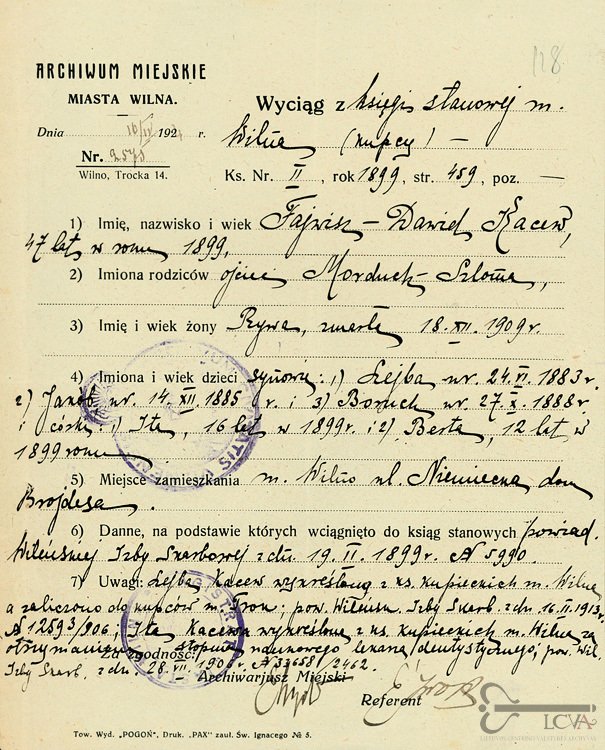
His mother’s attempts in Vilnius to create a future ‘Lord Byron, Garibaldi, D’Annunzio, d’Artagnan, Robin Hood and Richard the Lionheart all in One’ laid the foundations for Romain Gary’s future inventiveness. The child observed his mother’s fantasies from an early age, as she put up a sign with the name ‘Nina’ on their door (it sounded more Western than the East European Mina), sold hats made on Pohulianka ‘from fashion houses in Vienna and Paris’, and held meetings with drunken actors in her apartment, pretending to be a designer from France. Roman could only create his own reality by going out into the courtyards of Pohulianka, with their mysterious log sheds and mangy cats, and rough boys waiting for him, spoiling for a fight in order to attract the attention of the girls. Romain Gary wrote about his childhood in Vilnius in the autobiographical novel Promise at Dawn.
The Kacews lived at 16 Great Pohulianka Street for four years. In 1925, they moved to Warsaw, and three years later they settled in France. At the age of 21, he changed his name to Romain, and later he changed his surname to Gary. Gari in Russian means ‘burn’, from the words of a love song that his Jewish mother Mina, who grew up in the Russian Empire, particularly liked. You can read more about the writer, his life and his work in the list of recommended books below, but now let’s take a walk around the haunts of Romain Gary and his family in Vilnius.
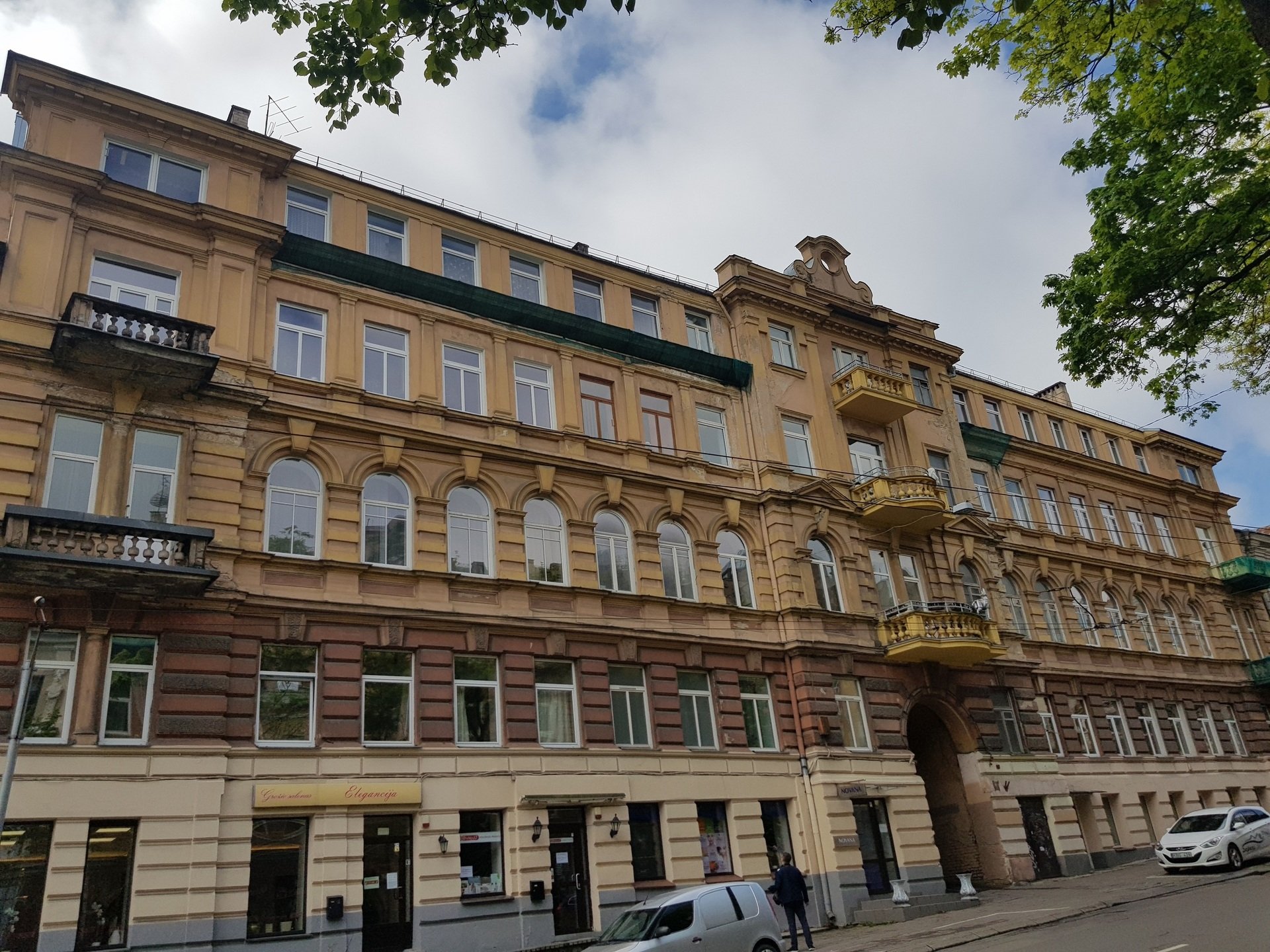
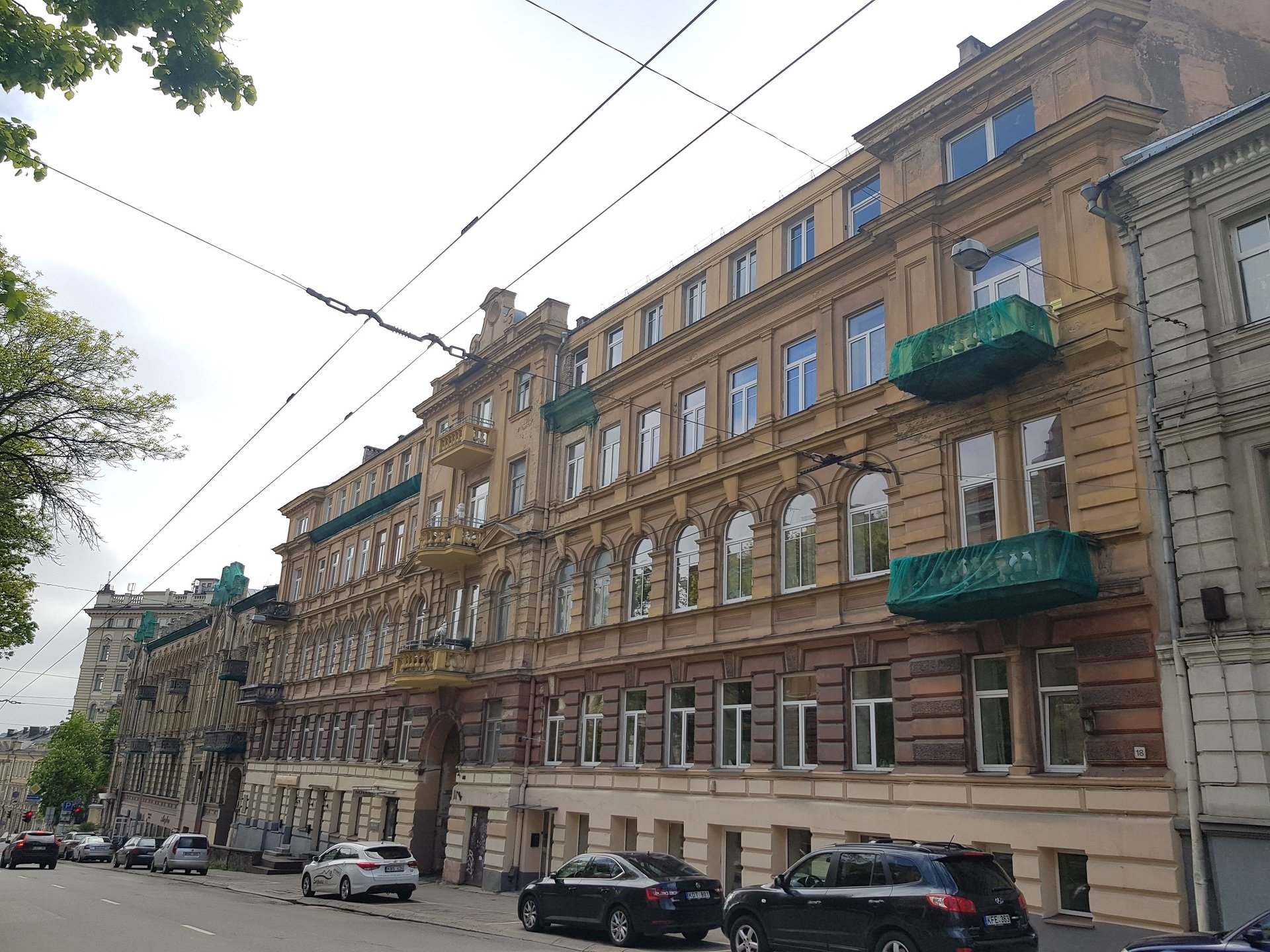
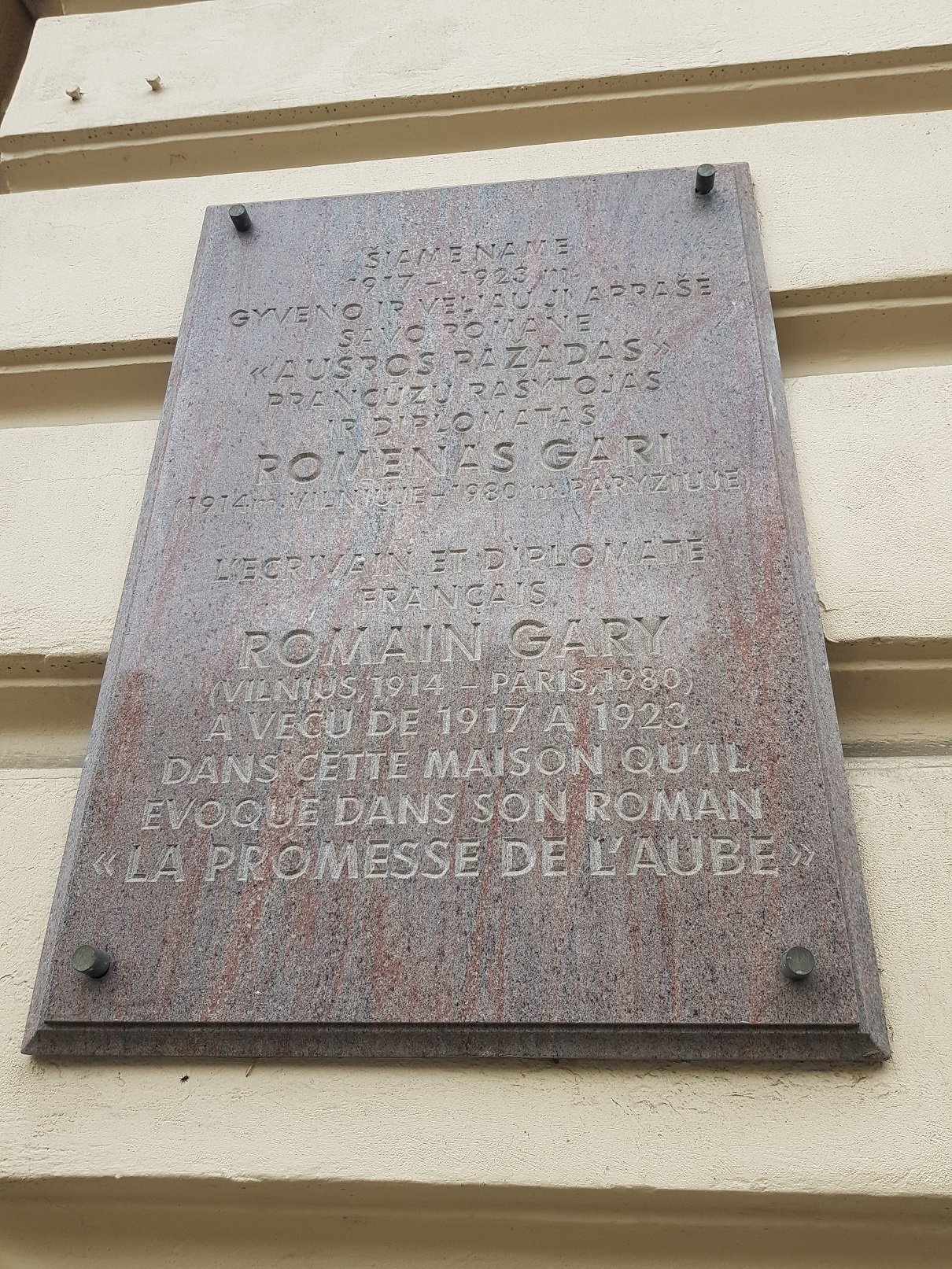
1. The house in which Romain Gary lived with his mother from 1921 to 1925. There is a memorial plaque on the wall of the house, and if you go through the gated archway into the yard, you can sit on a bench and feel the spirit of the life of the hundred-year-old courtyard, with its piles of logs, sheds and windowsills (18 Jono Basanavičiaus St).
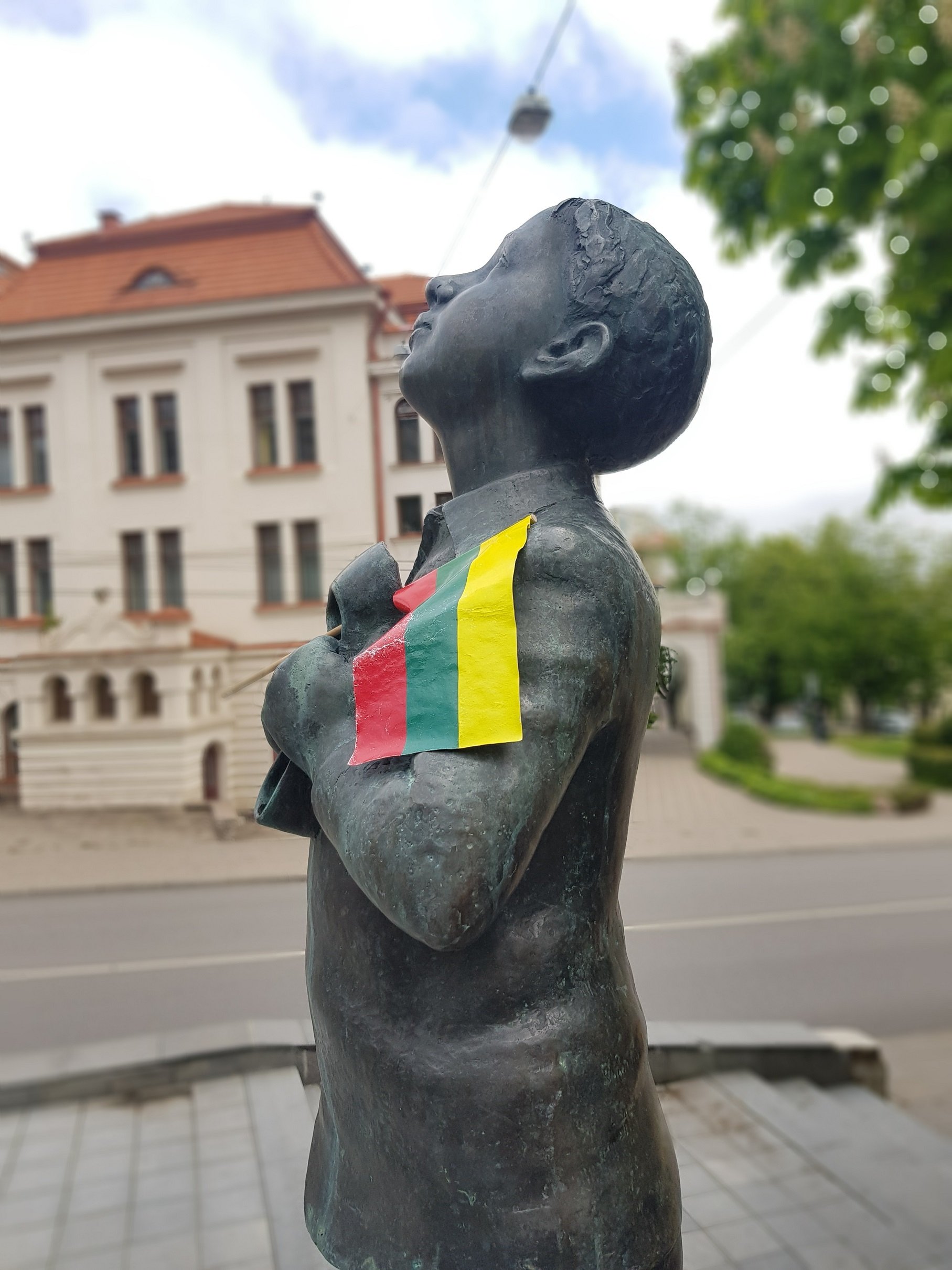

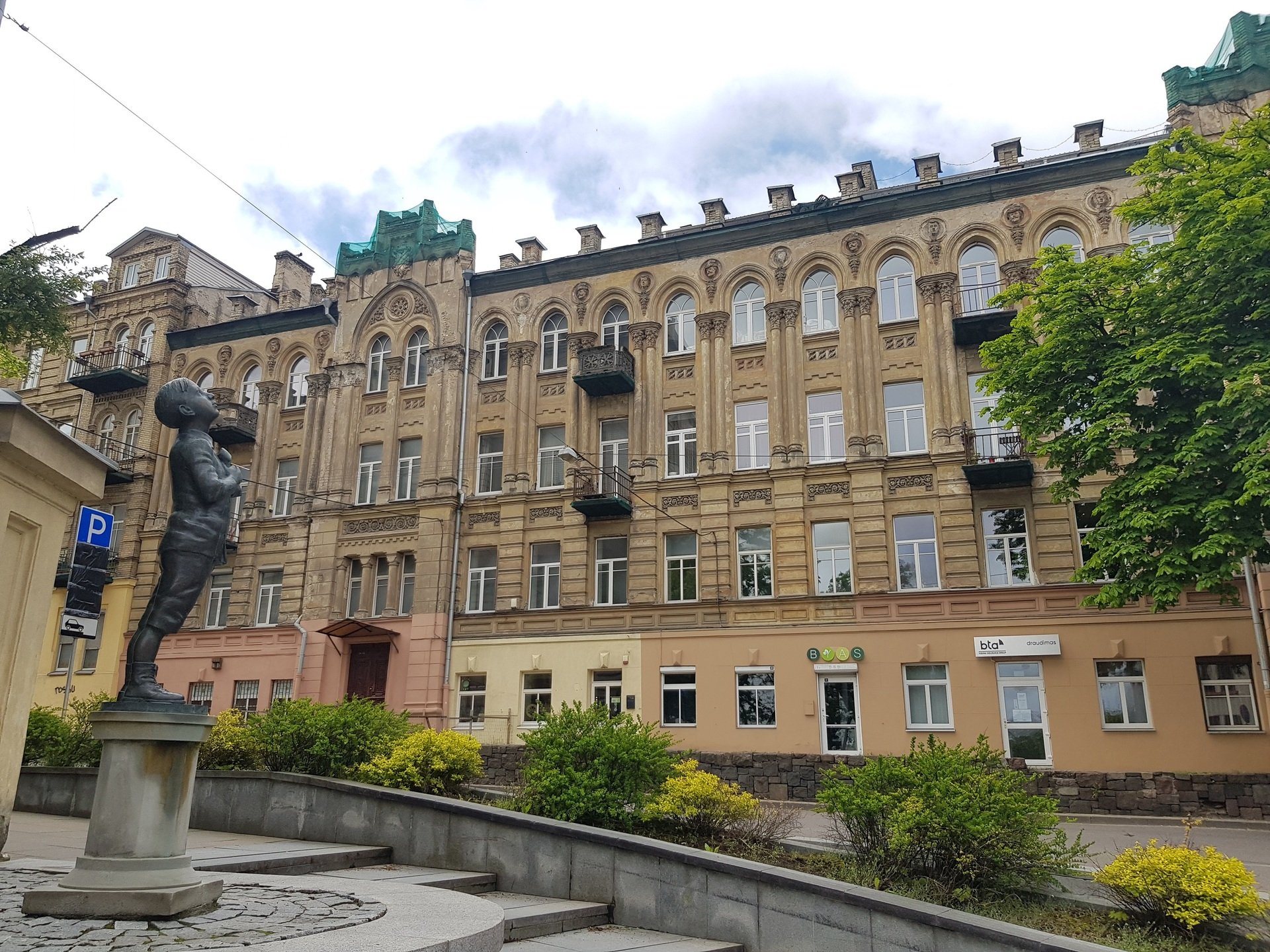
2. The monument to Romain Gary ‘The Boy with a Boot’ (by the sculptor R. Kvintas and the architect A. Songaila, 2007). The monument shows a boy holding a rubber boot he has begun to eat, to prove his love for the eight-year-old Valentina. He is holding his head high, as his mother used to tell him to, in order to show his blue eyes (the crossing of Jono Basanavičiaus and Mindaugo streets).
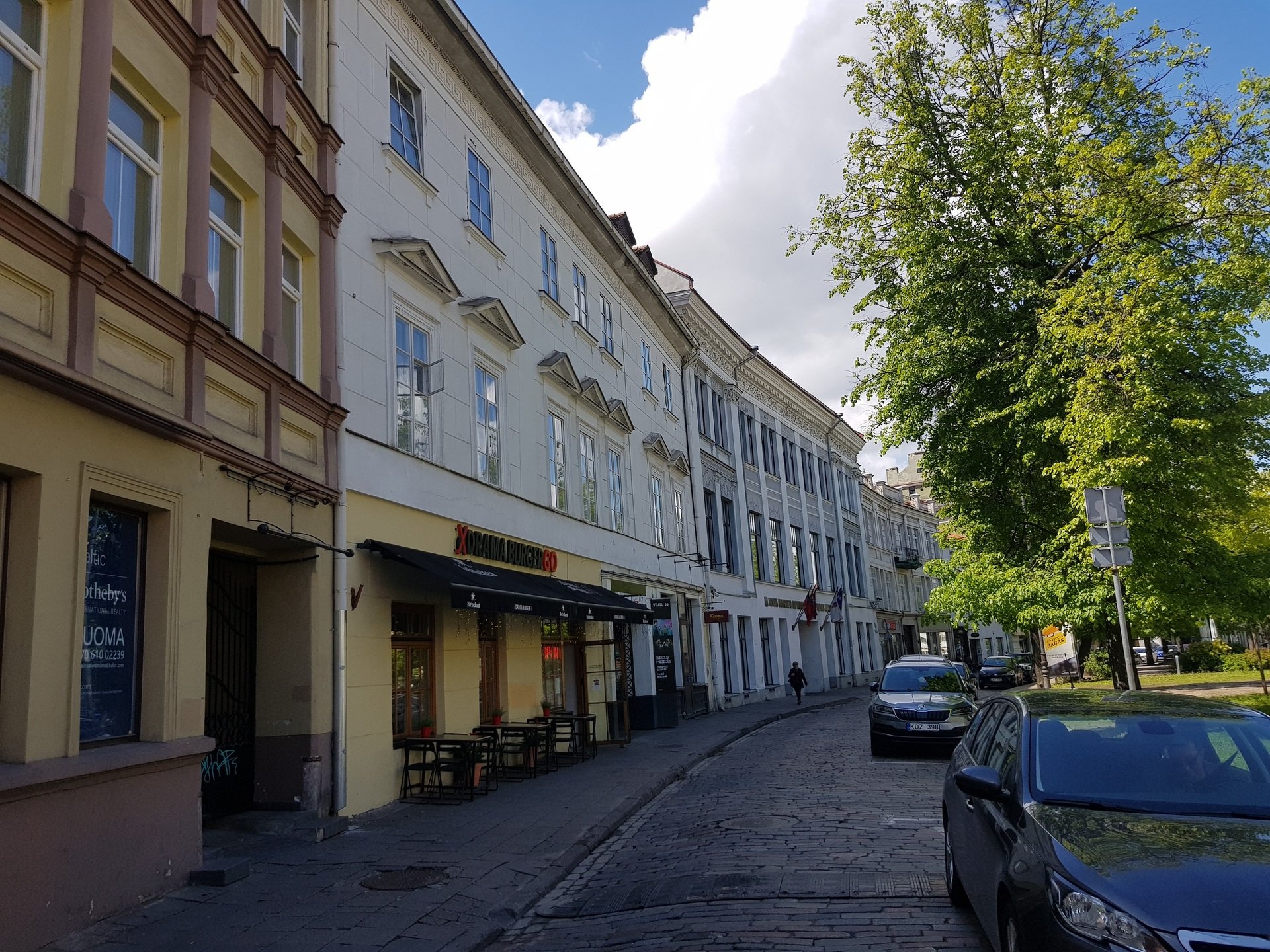
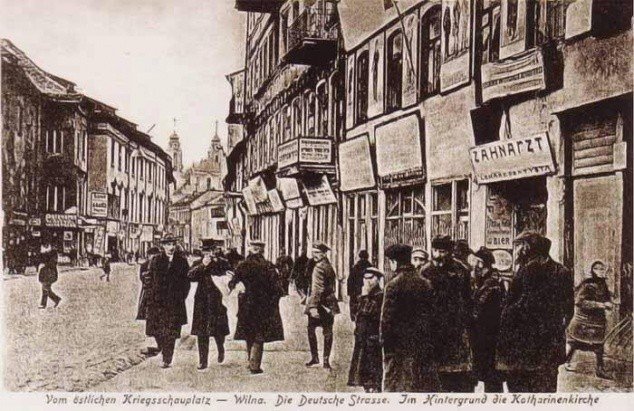
3. The fur warehouse owned by Faivel Kacew, the fur trading grandfather of Romain Gary (8 Vokiečių St; at that time, its address was 23 Niemiecka St).
On the other side of the street was his famous fur shop, in a property rented from the businessman and banker Israel Bunimovich (formerly 22 Niemiecka St, now a pedestrianised alley).
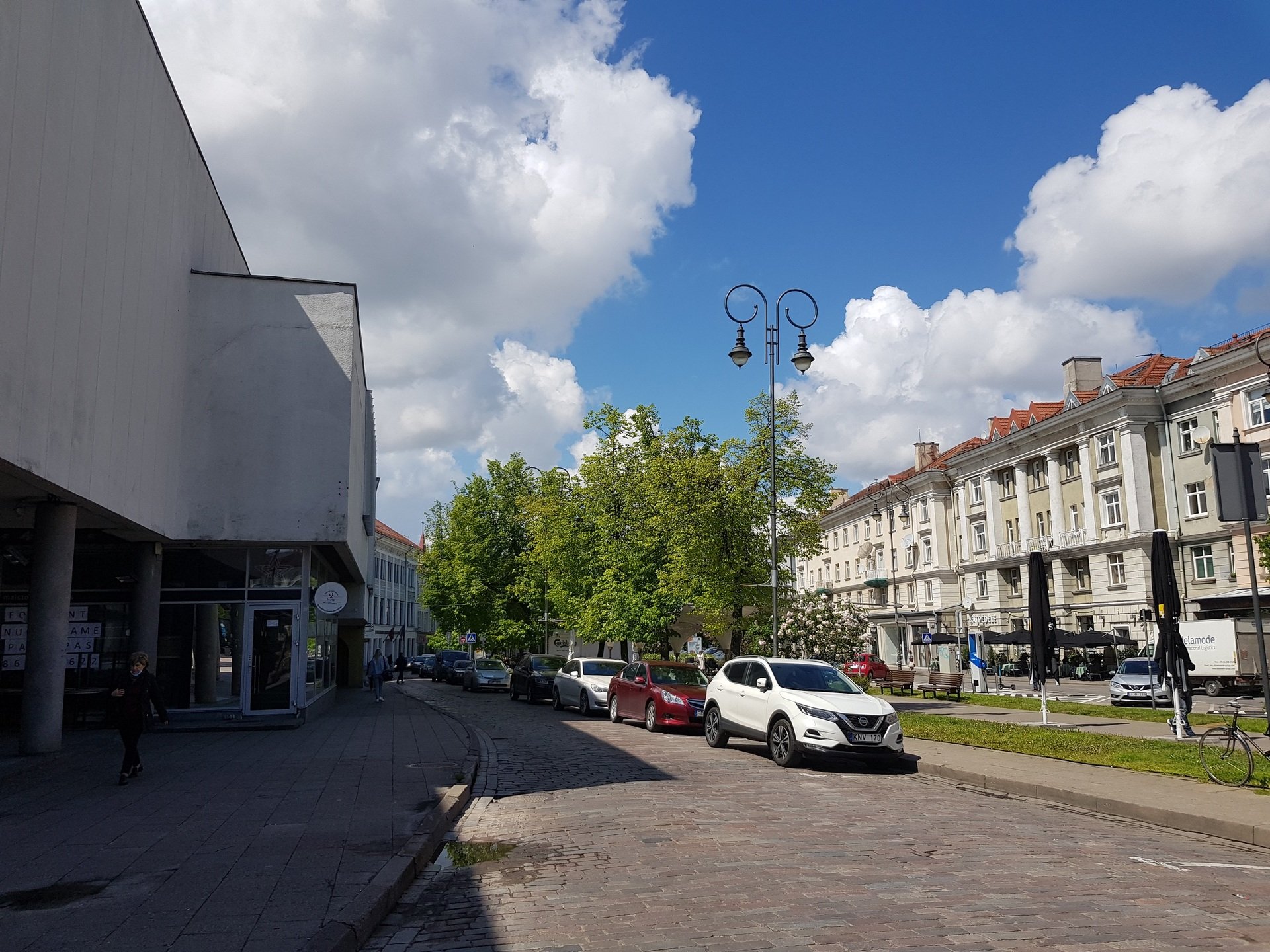 4. Faivel Kacew’s house (until 1911), and office and warehouse (from 1913). The warehouse belonged to Romain Gary’s father Leib and his uncle Boruch. When he was an adult, Romain found a book of old photographs of Vokiečių Street in Vilnius, and was able to recognise the places of his childhood. He was no stranger to fur: one room in his Paris flat was made into a ‘fur salon’ (29 and 31 Niemiecka St before the war, the site of the present-day Centre for Contemporary Art).
4. Faivel Kacew’s house (until 1911), and office and warehouse (from 1913). The warehouse belonged to Romain Gary’s father Leib and his uncle Boruch. When he was an adult, Romain found a book of old photographs of Vokiečių Street in Vilnius, and was able to recognise the places of his childhood. He was no stranger to fur: one room in his Paris flat was made into a ‘fur salon’ (29 and 31 Niemiecka St before the war, the site of the present-day Centre for Contemporary Art).
 5. The house in which Romain Gary is thought to have been born. In 1913, Faivel Kacew and his family rented a flat in this new luxury four-storey building, where Leib Kacew and his wife Mina also lived. Roman Kacew, the future Romain Gary, was probably born here in 1914. When the war broke out, Mina fled to Russia with her son. Leiba and his father also spent the years 1915 to 1918 in Russia (8 Subačiaus St).
5. The house in which Romain Gary is thought to have been born. In 1913, Faivel Kacew and his family rented a flat in this new luxury four-storey building, where Leib Kacew and his wife Mina also lived. Roman Kacew, the future Romain Gary, was probably born here in 1914. When the war broke out, Mina fled to Russia with her son. Leiba and his father also spent the years 1915 to 1918 in Russia (8 Subačiaus St).
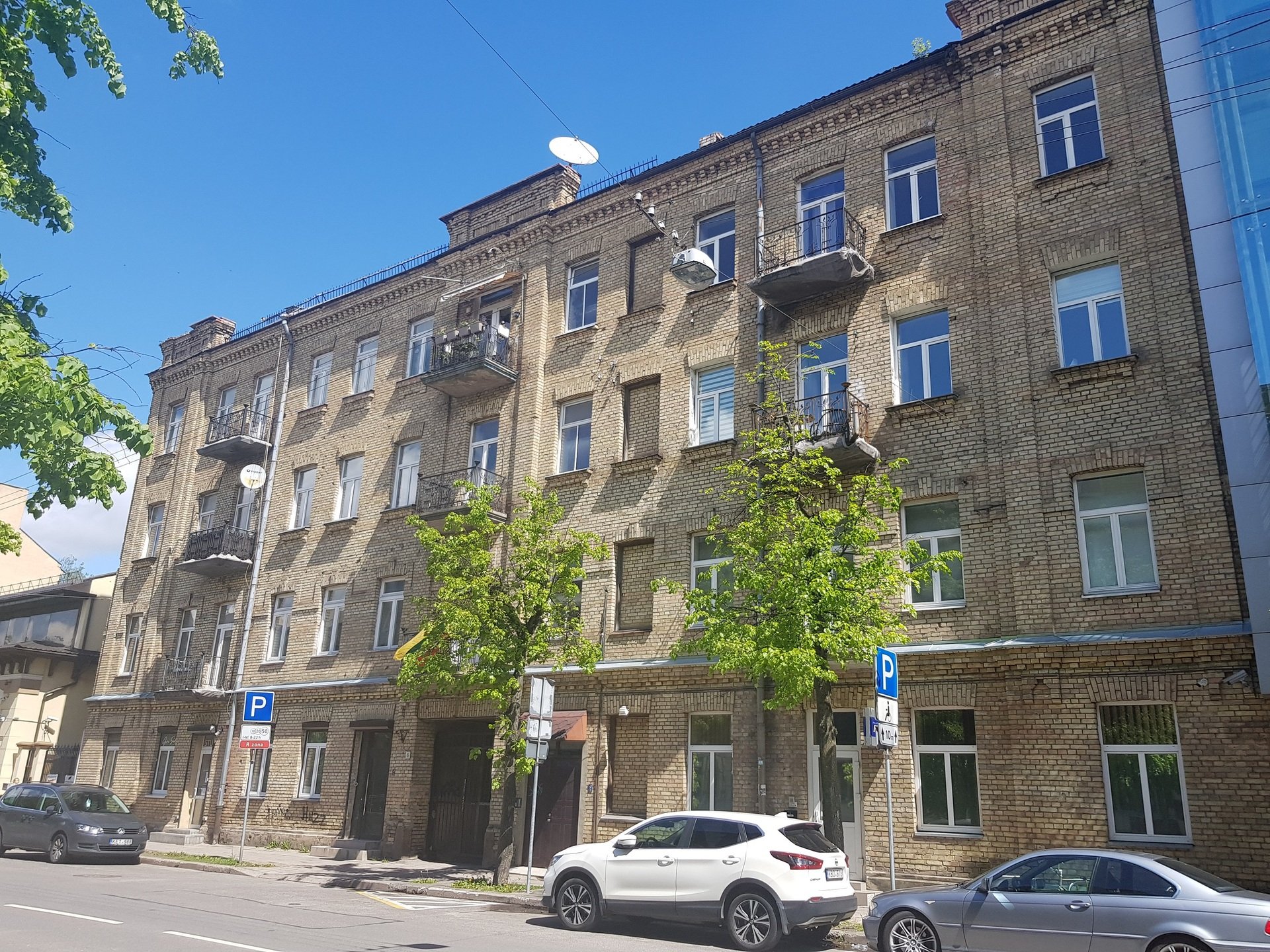 6. The house of Romain’s grandfather Faivel Kacew. On returning to Vilnius after the First World War, the grandfather and his daughter Berta lived here until his death in 1922 (6 Algirdo St).
6. The house of Romain’s grandfather Faivel Kacew. On returning to Vilnius after the First World War, the grandfather and his daughter Berta lived here until his death in 1922 (6 Algirdo St).
Author: Aušra Mikulskienė
Project partner: Vilnius City Municipality

